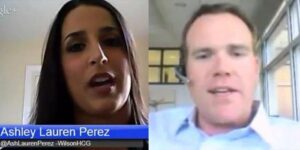Is Work-Life Balance Dead? Depends on Which Generation You Ask.
Is striking a balance between work and life a priority for you? You are not alone. 45 percent of employees said they don’t have enough
Is striking a balance between work and life a priority for you? You are not alone. 45 percent of employees said they don’t have enough
Almost every organization has a firm understanding of how important diversity is. There is an abundance of research out there that confirms more diversity results
We’re in the middle of a historic evolutionary leap driven by digital innovation and software technology. And it’s created a generational divide that holds both
What? You’ve never heard of it? <smile – snap – post> It’s all the social media rage. <smile – snap – post> And all the

The world of work is growing more complex and interesting all the time. Who are tomorrow’s leaders and how can they prepare today? Our community speaks…

Is Gen X really the “forgotten generation”? If so, what does that mean as the next wave of leaders must step in to lead the world of work?

What can industry conferences teach us about how to overcome generational stereotypes in the workplace? The Recruiting Trends Social Summit reminded me this week that the TalentCulture community mantra is more than mere words. Together we ARE better…

What role does age really play in today’s workplace? One of our very own #TChat Ambassadors takes a tough look, and offers advice for young professionals…

Today’s workplace is no place for age-based stereotyping. And yet, negative stereotypes persist. How can we break free from these assumptions that threaten professional relationships and business performance?

Even today, negative stereotypes can cast a shadow over our professional lives. See what experts from a top recruiting outsourcing firm say about labels in the workforce – this week’s focus on #TChat…
Here’s an interesting people factoid: At least three generations are playing in the workplace sandbox today, with a fourth set to join soon. The Boomers,
How old are you? (Did I really just ask that question?) But seriously, do age differences in the workplace make a difference in your world – for better or worse?
None of us is getting any younger. But what does that mean for our performance in the workplace – particularly our ability to reach across generations and work together toward common business goals? That’s the subject of this week’s #TChat…